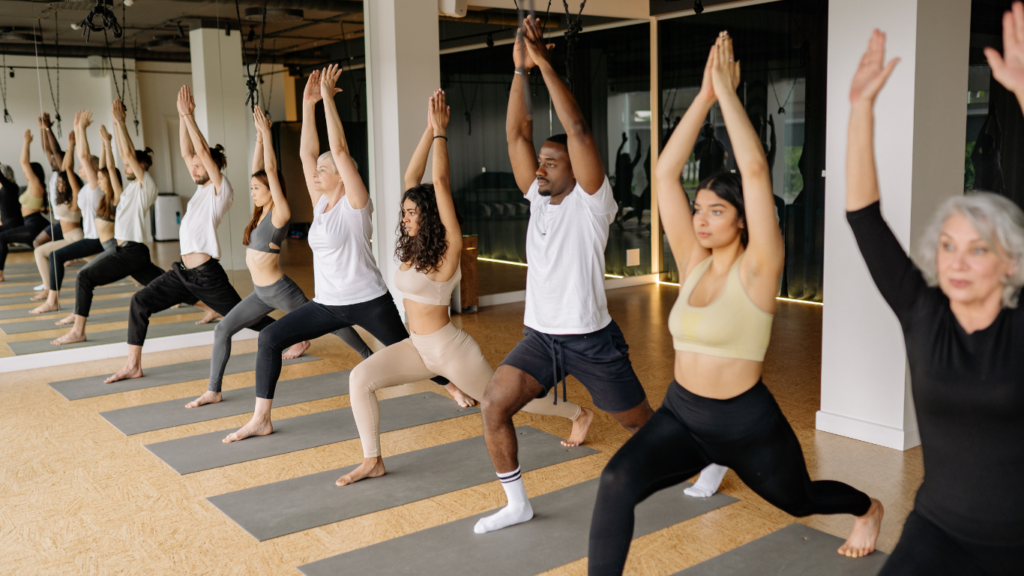Are you looking to enhance your flexibility and reduce the risk of injuries during your workouts? In this article, I’ll share top exercises that can help you achieve just that. Flexibility plays a crucial role in overall fitness and can significantly impact your performance in various physical activities.
By incorporating specific stretches and movements into your routine, you can improve your range of motion, muscle elasticity, and joint mobility. These exercises not only help prevent injuries but also contribute to better posture and enhanced athletic performance.
Whether you’re a seasoned athlete or just starting your fitness journey, focusing on flexibility can benefit you in numerous ways. Stay tuned as I guide you through some of the most effective exercises to boost your flexibility, prevent injuries, and take your fitness to the next level.
Benefits of Flexibility Exercises
Enhancing flexibility through targeted exercises offers a myriad of advantages that extend beyond improved physical performance. Flexibility exercises play a crucial role in maintaining overall health and fitness.
By engaging in regular flexibility routines, I can experience the following benefits:
- Enhanced Range of Motion: Flexibility exercises work to increase the range of motion in joints, allowing me to move more freely and efficiently during physical activities. This improved range of motion enables me to perform exercises with proper form and reduces the risk of injuries.
- Improved Muscle Elasticity: Stretching exercises enhance muscle elasticity, promoting better muscle function and reducing the likelihood of strains or tears. This increased elasticity also aids in muscle recovery post-exercise, helping me recover faster and maintain peak performance levels.
- Better Joint Health: Engaging in flexibility exercises helps in maintaining optimal joint health by lubricating the joints and enhancing their mobility. This is particularly beneficial in preventing joint stiffness and improving overall mobility, essential for long-term joint health.
- Injury Prevention: By incorporating flexibility exercises into my fitness routine, I can significantly reduce the risk of injuries during workouts. Improved flexibility ensures that muscles and joints can move through their full range of motion, minimizing the chances of strains, sprains, and other exercise-related injuries.
- Enhanced Athletic Performance: Flexibility exercises not only prevent injuries but also contribute to enhanced athletic performance. Increased flexibility leads to improved muscle coordination and efficiency, translating to better overall performance in various physical activities and sports.
Incorporating flexibility exercises into my regular workout routine is essential for reaping these benefits and optimizing my overall fitness and performance levels. By prioritizing flexibility, I safeguard my joints, muscles, and overall health while enhancing my physical capabilities and reducing the risk of exercise-related injuries.
Importance of Preventing Injuries
Flexibility plays a crucial role in preventing injuries, especially during physical activities. By improving flexibility, individuals can enhance their overall fitness, reduce the risk of injuries, and perform better in various workout routines.
Relationship Between Flexibility and Injury Prevention
Enhancing flexibility through exercises is directly linked to preventing injuries. It helps in maintaining optimal joint function, reducing the likelihood of strains or tears, and improving muscle coordination and efficiency.
Top Exercises for Improving Flexibility and Preventing Injuries
Yoga:
Yoga is a versatile practice that incorporates a series of poses, or asanas, designed to improve flexibility, strength, and balance. It focuses on controlled movements and deep breathing, helping to enhance muscle elasticity and joint mobility while reducing the risk of injuries.
Poses like Downward-Facing Dog, Cobra, and Child’s Pose are excellent for stretching and lengthening muscles, promoting better range of motion and overall flexibility.
Pilates:
Pilates is a low-impact exercise method that targets the core muscles, promoting core strength, stability, and flexibility. The controlled movements and emphasis on proper alignment in Pilates help improve muscle elasticity and joint mobility, reducing the likelihood of strains or injuries.
Exercises like the Hundred, Roll-Up, and Leg Circles are effective in enhancing flexibility, especially in the spine and hips, key areas for injury prevention in physical activities.
Stretching Routines:
Incorporating stretching routines into your workout regimen is essential for maintaining flexibility and preventing injuries. Dynamic stretches, such as leg swings and arm circles, help warm up the muscles and increase blood flow before exercise, reducing the risk of strains.
Static stretches, like hamstring stretches and shoulder stretches, should be performed post-workout to improve flexibility and muscle recovery, thereby decreasing soreness and aiding in injury prevention. Regularly including stretching routines in your fitness routine can enhance overall flexibility, optimize performance, and safeguard your physical well-being.
Tips for Safely Incorporating Flexibility Exercises
When incorporating flexibility exercises into your workout routine, it’s essential to prioritize safety to prevent injuries and maximize the benefits.
- Start Slow: Begin with gentle stretches and gradually increase the intensity to avoid straining your muscles or joints.
- Proper Form: Focus on maintaining proper form during each stretch to ensure effectiveness and reduce the risk of injury.
- Listen to Your Body: Pay attention to your body’s signals. If you feel pain beyond typical discomfort, stop the exercise to prevent injury.
- Warm-Up: Always warm up your muscles with light cardio or dynamic stretches before engaging in more intense flexibility exercises.
- Cool Down: Finish your workout with static stretches to help relax your muscles and improve flexibility over time.
- Stay Consistent: Incorporate flexibility exercises into your routine regularly to see improvements in range of motion and reduce injury risk.
- Hydrate: Drink an adequate amount of water before, during, and after your workout to keep your muscles flexible and functional.
- Balance Exercises: Combine flexibility exercises with strength training to enhance overall fitness and reduce the likelihood of imbalances that can lead to injuries.
By following these tips, you can safely integrate flexibility exercises into your fitness regimen and enjoy the numerous benefits they offer.


 Dawnny Armstrongster, the visionary founder of Toe Back Fitness, is a passionate advocate for health and wellness, driven by a mission to empower individuals to lead active, balanced lives. With a deep understanding of fitness and injury prevention, Armstrongster has cultivated a platform that merges expert insights with practical advice, making fitness accessible to people at all levels. Her commitment to promoting sustainable lifestyle habits and safe workout practices reflects her dedication to long-term well-being. Under her leadership, Toe Back Fitness has become a trusted resource for those seeking to enhance their physical health, choose the right gear, and build routines that align with their fitness goals.
Dawnny Armstrongster, the visionary founder of Toe Back Fitness, is a passionate advocate for health and wellness, driven by a mission to empower individuals to lead active, balanced lives. With a deep understanding of fitness and injury prevention, Armstrongster has cultivated a platform that merges expert insights with practical advice, making fitness accessible to people at all levels. Her commitment to promoting sustainable lifestyle habits and safe workout practices reflects her dedication to long-term well-being. Under her leadership, Toe Back Fitness has become a trusted resource for those seeking to enhance their physical health, choose the right gear, and build routines that align with their fitness goals.